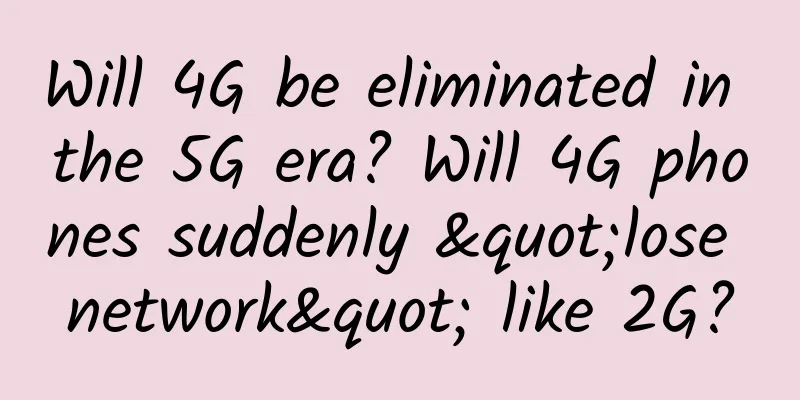TCP send window, receive window and how they work

|
The chart above is a snapshot taken from the sender's perspective. We can divide the data into 4 groups:
Class 3 is also called the available window because this is the window that the sender can use. The send window includes the yellow and green parts. These bytes have either been sent or can be sent. 1*OqqxQKu4ZGasXzIlUZ9lyw.png The available window may be empty when the sender has sent 21-25 bytes and used all bytes in the available window. The send window remains unchanged. 1*JdTCgvYpVPRDcLyVb8Rwsg.png When the sender receives an acknowledgment for bytes 16-19, the send window slides 4 bytes to the right. The next bytes in the queue will have a newer available window. 1*9zFu_scvenahSK6m-khSjw.png Some definitions may help us better understand the complexities that follow in this article:
1*IYBc3_OiPWAZ7JCvIaktkA.png Based on these definitions, we can express the size of the available window as follows. Receive Window1*SbgJAvyVKyXYvPLuoBbGtA.png The receive window is divided into 3 categories:
The second type is called the receive window, which can also be called RCV.WND. Similar to the send window, there is a pointer RCV.NXT, which represents the first byte of the receive window. 1*u3KoxvVK-rrM1g4gX6fbZQ.png The receive window is not static. If the server is running efficiently, the receive window can expand. Otherwise, it can shrink. The receiver communicates its receive window by indicating the size in the window field in the TCP segment header. When the sender receives it, this window size becomes the available window. Sending and receiving segments takes time. Therefore, the receive window is not equal to the available window at a particular moment. Simplified exampleLet's simulate a request and response to better understand how the sliding window works. There are two modifications that simplify our calculations.
1*sAF4A2TyNeItzw2yK0xI9g.png Above is a diagram showing an example of 10 steps. The client requests a resource and the server responds with three segments:
Each party can be both a sender and a receiver at the same time. We assume that the client's send window (SND.WND) is 300 bytes and the receive window (RCV.WND) is 150 bytes. Therefore, the server's SND.WND is 150 bytes and RCV.WND is 300 bytes. 1*cU9TEaEoezDwvw__3G1DFw.png This is the starting state of the client. We assume that it has previously received 300 bytes from the server, so RCV.NXT points to 301. Since it hasn't sent anything yet, SND.UNA and SND.NXT both point to 1. 1*IYBc3_OiPWAZ7JCvIaktkA.png According to this formula, the available window size for the client is 1 + 300 - 1 = 300. 1*kfa6ZdhSR_VJggJ2abUSAQ.png This is the starting state of the server, reflecting the state on the other side. Since it has sent 300 bytes, both SND.UNA and SND.NXT point to 301. Since the client has not sent any request yet, RCV.NXT points to 1. The server's available window is 301 + 150 - 301 = 150. Now, step 1 begins. The client sends the first 100 bytes of the request. At this moment, the window changes.
The available window becomes 1 + 300 - 101 = 200. 1*ug0laVIMWQ3HGG-kPjZ0KA.png In step 2, we focused on the server.
The available window becomes 301 + 150 - 351 = 100. 1*GAZqLwbVGj2yqUnm5DyI4w.png Move to the client.
The available window becomes 101 + 300 - 101 = 300. 1*50UitYxS9XW3N4XV2Z7tOg.png Move to the server side again. The available window is 100 bytes. The server can send segments of 80 bytes.
The available window becomes 301 + 150 - 431 = 20. 1*soNJeyvqRj0zqDDrtBL9Fg.png The client receives the first part of the file and immediately sends an ACK.
The available window remains at 300. 1*QJKwuY3HvslR9601ZRWCxA.png At this point, the server receives an ACK when it sends step 2.
1*thuJ7lCYqreqxsL8nMz_ag.png In step 4, the server sends the first 80 bytes of the file and receives an ACK again.
The calculation of the available window becomes 431 + 150 - 431 = 150. 1*8sS5S0OkW0I2Vbp40nkkZQ.png In step 8, the server sends the second part of the file, totaling 100 bytes.
The calculation of the available window becomes 431 + 150 - 531 = 50. 1*qXP9BCX80vPpkplc5utP6Q.png Next, it's the client's turn.
The available windows remain unchanged. 1*LkQ7tG-_1XQROjOZ3vTC9g.png Finally, the server receives an ACK for the previous response.
The calculation of the available window becomes 531 + 150 - 531 = 150. When the window changesEarlier, we assumed that the send window and the receive window remain constant. But in reality, this assumption is incorrect because the bytes in both windows exist in the operating system buffer, and the free space in the buffer can be adjusted. When our application cannot read the bytes in the buffer quickly, the free space will decrease. Let's look at what happens when a window changes and how it affects the available windows. 1*qyjkUdkAdsfrkRkqVlPClw.png For simplicity, this example focuses on the client's available window. In this example, the client is always the sender and the server is the receiver. 1*u3KoxvVK-rrM1g4gX6fbZQ.png When the server sends an ACK, it also includes the updated window size. 1*pkiC_TWGpIZF3aSPOz6lcA.png Initially, the client sends a 150-byte request.
1*zs4VuHChJJ-7vWFmXyr8Ug.png When the server receives the request, the application reads the first 50 bytes, and the remaining 100 bytes are still in the buffer, taking up 100 bytes of available space from the receive window. Therefore, the receive window is reduced to 200 bytes. Next, the server sends an ACK with an updated receive window of 200 bytes. 1*SZDl6q22CB6kzY3P-CCHFA.png The client receives the ACK and updates its send window size to 200. At this point, the available window is the same as the send window because all 150 bytes have been acknowledged. 1*6gKYyaDUdOQSEGfHh6SWdA.png Again, the client sends another request for 200 bytes, using all the available space in the available window. 1*uJiRzHmdV4kT8lPW62bz0g.png After the server receives these 200 bytes, the application is still slow and has only read 70 bytes in total, leaving 280 bytes in the buffer. This causes the receive window to shrink again, now only 20 bytes are left. In the ACK message, the server shares the updated window size with the client. 1*xnUjR-R45hPoGO7qhvCHKg.png Again, after receiving the ACK, the client updates its send window to 20 bytes, and the available window also becomes 20 bytes. In this case, if there are no more messages from the server, the client will stop sending requests larger than 20 bytes until another window update is received in a subsequent message. So, if no more messages come from the server, are we stuck with the 20 byte available window? No. To avoid this, the client's TCP periodically checks the window size. Once more space is freed, The available window will be expanded and more data can be sent. Main content
|
<<: What is WebSocket and how is it different from HTTP?
>>: Is the backend a bit cumbersome? Go to the client!
Recommend
Comparison and conversion between IF sampling and IQ sampling
RF receiving systems usually use digital signal p...
I encountered message accumulation, but it is not a big problem
[[431068]] Hello everyone, I am captain. If you f...
Has NB-IoT solved the business model problem that has plagued the Internet of Things for a decade?
The business model has always been a key factor t...
EPM business-finance integration is gaining popularity. How does FONE break through the boundaries of financial digitalization?
Traditional financial services are no longer the ...
Talk about TCP's three-way handshake and four-way wave
[[400134]] This article is reprinted from the WeC...
What is edge computing from a hardware perspective?
Edge computing has exploded due to the massive am...
DiyVM: 50 yuan/month-2GB/50GB/5M/Hong Kong, Japan, and the United States are available
DiyVM is a Chinese hosting company founded in 200...
"Innovation City" shines brightly and opens up a new ecosystem for Ascend
[[337542]] On August 11, 2020, the DevRun Develop...
CMIVPS US/Hong Kong VPS restocking 20% off monthly payment/30% off annual payment, 10% off for dedicated servers
CMIVPS is currently restocking a large number of ...
20 lines of Python code to achieve encrypted communication
1. Introduction The Internet is full of eavesdrop...
Wu Hequan: 5G's key performance has not yet been reflected in the application end. This year's positioning accuracy will be increased to 0.3 meters
[[375297]] Recently, Wu Hequan, an academician of...
TmhHost: US AS9929 line from 30 yuan/month, US CN2 GIA/Hong Kong CTG monthly payment from 40 yuan
TmhHost is a Chinese hosting company founded in 2...
Huawei launches three new CloudLink collaboration products for enterprise communications, turning conference rooms into "war rooms"
[51CTO.com original article] Recently, Huawei lau...
spinservers: $99/month 1Gbps unlimited traffic - E3-1280v5, 32G memory, 1T NVMe hard drive, Dallas data center
Last week we shared information about spinservers...
In the digital age, FONE comprehensive budgeting practice sharing in the pharmaceutical industry
In recent years, the pharmaceutical industry has ...









